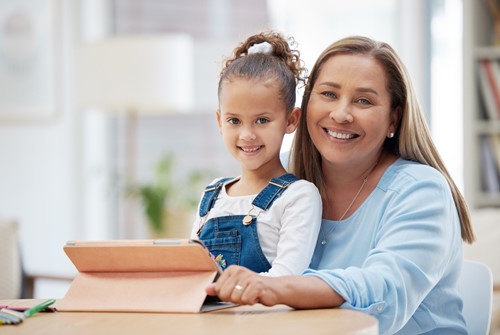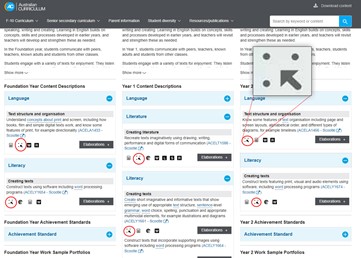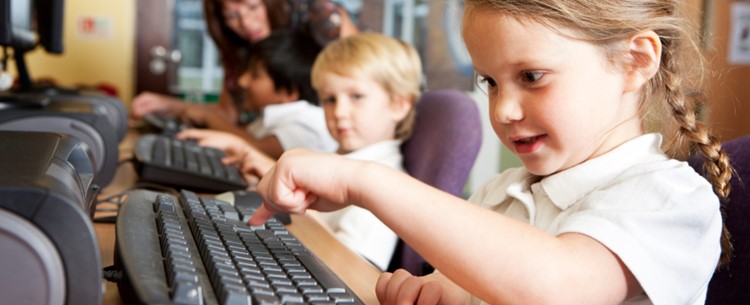Personalised Learning in Early Childhood Education: How ICT Makes it Possible
When you think about the children in your care, you already know they each learn in their own way. Some are drawn to creating, others to problem-solving, and some to storytelling. Personalised learning is about shaping your teaching so it fits each child’s abilities, interests, and pace.
The Early Years Learning Framework (EYLF) V2.0 calls this being a responsive educator — deliberately adjusting what and how you teach to meet the strengths, abilities, and interests of each child. It’s not just about planning ahead. It’s about noticing in the moment, responding instantly, and creating opportunities that make learning meaningful for that child right then and there.
How digital technology can help you be responsive
If you’ve ever spotted a child’s curiosity spark and thought, “I wish I had something ready to build on that,” ICT can be that bridge. The EYLF describes responsiveness as tuning into children’s cues, recognising their backgrounds and prior knowledge, and building on what you see (p. 20).
Digital tools make this easier because you can:
-
Follow an interest instantly — for example, hand a child fascinated by patterns a tablet to capture them and later use a photo editor to explore those shapes.
-
Match the task to their skill level — give a beginner a short Bee-Bot route or a confident coder a complex challenge.
-
Offer different ways to engage — visual, audio, interactive, hands-on.
-
Get immediate feedback — and adjust your support right away.
-
Capture progress — so you can revisit their learning and extend it later.
What this looks like in action
Let’s say you’re outdoors on a Digital Nature Walk & Photography activity. You notice a child zooming in on tree bark patterns. You respond by introducing a simple editing app, encouraging them to highlight the patterns in creative ways. You’ve just linked science observation with creative arts — and made it personal.
Or you’re running a Bee-Bot School Bus challenge. One child is ready for a multi-stop route, another is still mastering forwards and backwards. You adapt their paths so both succeed and stay engaged.
Or perhaps during Outdoor Digital Storytelling, you notice a group is more interested in recording sounds than taking pictures. You let them build their whole story around soundscapes. You’ve followed their lead while still meeting EYLF outcomes.
Reflection: the driver of real change
Being responsive isn’t only about what happens in the moment — it’s also about looking back at your own teaching and asking, How can I do this better for every child?
Reflecting on your teaching helps you:
-
See patterns in how children respond to ICT activities.
-
Recognise which strategies are working for personalisation — and which need to change.
-
Plan future experiences that are even more closely tailored to individual needs.
The ICT in Education Teacher Academy workbook gives you ample space and guidance for this kind of critical reflection. You’ll find dedicated Reflection Prompts and Assessment & Observations pages that help you analyse your teaching decisions, think about how you responded to each child, and identify new ways to personalise learning next time.
Taking this from idea to daily practice
Knowing about personalised learning and being responsive is one thing. Doing it consistently, in a way that’s intentional, documented, and reflective, is where you’ll see the real change.
If you were a member, you’d have specific workbook tools to make this process part of your everyday teaching:
| Workbook Tool | How You’d Use It to Personalise Learning |
|---|---|
| Lesson Planning Template (pg. 114) | Plan ICT activities that start with a child’s interests and link directly to EYLF outcomes |
| Observation Guide (pg. 101) | Record real-time notes about engagement, skills, and emerging interests during ICT use. |
| TPACK Growth – ICT for Language and Collaboration | Identify the right ICT tools to suit a child’s communication strengths. |
| Assessment & Observations – Capturing Creative ICT Learning | Document how a child used ICT to problem-solve, create, or express themselves. |
| Community Reflection Prompts (pg. 182) | Reflect on what worked, share your experience with peers, and get fresh ideas for next time. |
Your pathway to making it happen
Here’s how your process might look:
-
Spot the spark – You notice a child’s interest or strength in an ICT activity.
-
Plan with purpose – Use the Lesson Planning Template to shape the next experience.
-
Respond in the moment – Adapt the activity as their engagement unfolds.
-
Capture the moment – Use the Observation Guide to record what you see.
-
Reflect and extend – Use the Reflection Prompts to refine and build on the learning.
That’s personalised learning in action — and it’s exactly what the EYLF’s responsive educator practice is all about. With the right ICT tools, and by making critical reflection part of your routine, you can ensure personalised learning becomes a reality for every child, every day.


Personalised Learning in Primary Schools: The Role of Digital Technology
In primary education, personalised learning means much more than adapting activities to suit individual interests. It’s about actively designing pathways that help every learner progress towards their goals while developing the skills they need for the future. Students have greater agency, content can be adapted to multiple levels, and learning is supported by technology that responds in real time.
The application gap
Even with the best intentions, many teachers find that personalised learning strategies stay as good ideas rather than becoming daily practice. The missing link is often having structured resources, adaptable lesson plans, and reflection tools ready to go — so you can personalise learning in the moment without adding to your planning load.
What personalised learning looks like in primary schools
As KnowledgeWorks explains, personalised learning in primary empowers learners to take ownership, supported by teachers acting as mentors and guides (KnowledgeWorks, 2024).
| Principle | What It Looks Like in Primary | How Members Apply It |
|---|---|---|
| Student agency | Learners help set goals and choose strategies to achieve them. | Use the Lesson Planning Template to co-create learning objectives linked to ICT activities. |
| Adaptive progression | Tasks adjust to match each student’s skill development. | Access ICT lesson plans with built-in tiered challenges for instant differentiation. |
| Data-informed instruction | Assessment data shapes the next learning steps. | Use the Observation Guide to track progress and adapt plans. |
| Flexible content delivery | Blend whole-class, small-group, and independent ICT activities. | Select from lesson plans designed for multiple delivery modes. |
How technology makes it possible
The Digital Education for Primary Schools report highlights that ICT enables differentiated tasks, real-time monitoring, and creative ways for students to show understanding (European Commission, 2022, p. 15).
According to the British Journal of Educational Technology, technology supports personalisation by “providing adaptive content, facilitating learner choice, and offering instant feedback” (BJET, 2023).
| Technology Strategy | Personalisation Benefit | Membership Connection |
|---|---|---|
| Adaptive learning platforms | Adjust difficulty in real time based on answers. | Members can integrate adaptive software into lesson templates for planned differentiation.Collaborative tools |
| Collaborative tools | Students co-create projects, taking roles that suit strengths. | Lesson plans outline role-based ICT tasks for balanced participation. |
| Digital portfolios | Students track and reflect on their learning over time. | Assessment & Observations section supports portfolio creation with evidence-based notes. |
| Multimodal resources | Video, simulations, and interactive quizzes cater to different learning styles. | Members receive curated ICT resource lists matched to primary curriculum outcomes. |
Building higher-order skills through ICT
Personalised learning in primary should stretch thinking, not just maintain engagement. The Digital Education for Primary Schools guide emphasises integrating critical thinking, creativity, collaboration, and communication into personalised pathways (European Commission, 2022, p. 22).
| Higher-Order Skill | ICT Example | How Members Plan For It |
|---|---|---|
| Critical thinking | Using simulation software to solve real-world problems. | Map activity goals in the Lesson Planning Template with EYLF/ACARA links. |
| Creativity | Designing multimedia presentations from personal research. | Use workbook prompts to integrate creative choice points into tasks. |
| Collaboration | Working in online groups to build shared projects. | Adapt group work strategies from lesson plans to suit student abilities. |
| Communication | Recording podcasts or video explanations of concepts. | Apply TPACK Growth – ICT for Language and Collaboration guidance to match tools to skills. |
Reflection: the driver of continuous improvement
True personalisation doesn’t end when the task is over. Reflecting on your teaching — and encouraging students to reflect on their learning — is key to making sure every learner gets what they need next time.
Inside the membership workbook, you’ll find Community Reflection Prompts and Assessment & Observations pages designed to help you:
-
Analyse which ICT strategies worked for different learners.
-
Identify where personalisation could be improved.
-
Plan new approaches for the next cycle of learning.
From principle to practice — your next step
You’ve seen how technology can unlock personalised learning in primary education. Inside the ICT in Education Teacher Academy, you’ll find adaptable ICT lesson plans, planning templates, and reflection tools that make these strategies part of your daily practice — without extra workload.
With the right tools in place, you can:
-
Design differentiated ICT activities quickly.
-
Respond to student needs in the moment.
-
Track progress meaningfully over time.
-
Build critical and creative skills alongside curriculum content.
You don’t have to figure it out alone — and you don’t have to start from scratch. The membership gives you the framework to make personalised learning happen in your classroom every day.

What is Personalised Learning?
Personalised learning in primary schools is about ensuring that all students are supported in their learning goals and needs. It is commonly to do with disability students, however, the Australian Curriculum Learning Continua also has a core element which focuses on personalised learning in key learning areas.
For that to do with disable and gifted and talented students, it is underpinned by four key elements in activities:
- The assessed individual education needs of the student
- The provision of adjustments or support to meet the students' assessed needs
- Monitoring and review of the impact of the adjustment or support being provided for the student
- Consultation and collaboration – of teachers with parents, support staff, and other professionals where required.
Personalised learning pathways:
- Is based on age-equivalent content that is meaningful and considers a student’s individual needs and communication skills
- Promotes the student’s engagement by considering their strengths and interests
- Provides rigorous teaching and learning experiences that challenge, extend and develop the student.
For the sake of this article, you and I will look at personalised learning in the Learning Continuum.
What is Personalised Learning in Primary Schools?
Personalised learning in primary schools particularly in Australia is concerned with giving students the opportunity to develop their capabilities over time and across all key learning areas.
This is accomplished by using the learning continuum to map out a path for learning progression in 21st century general capabilities particularly in Primary education.
The foundations for a child’s personalised learning plan is set in early childhood education and care and this supports all subsequent learning.
In this article, you and I will examine one as a Case Study – the General Capability – ICT Capability.


The Australian Curriculum Learning Continuum is a personalised learning plan which maps out learning progression pathways for students.
It aligns with the years of schooling in Australia and there are six stages or levels starting with Level 1 in Foundation Year to Year 10 at Level 6.
Personalised learning in primary schools occurs up to Year 6 at Level 4.
This makes it the responsibility of primary teachers to ensure that the majority of personalised learning in the Learning Continua occurs in their classroom learning environment.
ICT capability consists of a number of elements which are diversely spread out in key learning areas. These include:
- Applying social and ethical protocols and practices.
- Investigating with ICT.
- Managing and operating ICT
- Communicating with ICT.
- Creating with ICT.


As literacy in primary school is a key focus one element of the ICT capability Learning Continuum that is applied in its teaching is Creating with ICT. Literacy and ICT in the primary school work very effectively as the provisionality of ICT enhances the learning of literacy. However, this is to the extent of your own ICT capability and literacy teaching skills as a teacher. Personalised learning in primary school begins in this regard with effective planning.

Planning for Personalised Learning and Support in ICT Capability
In order for you to effectively plan for personalised learning in ICT capability, I have outlined the following process in accordance with ICT Capability Learning Continuum. The Early Years Learning Framework Outcomes 4 and 5 will also be covered in the following.
Get to know the Student
As personalised learning occurs from the Foundation Years up, if you are an early childhood teacher or that of an early years Primary teacher, then it is essential that you ensure that you gather the pertinent information from parents and/carers at the moment their child begins their education and care with you.
To help paint a picture of the ICT experiences children bring, you can:
- Invite families to tell you about their child’s interests.
- Observe children at play using a range of technology.
- Talk to parents on a regular basis, inviting two-way communication on a child’s interests, learning, and development.
- Listen to parents’ stories about their child’s experiences with ICT at home.
This information will help you to begin to plan for learning progression in ICT capability, but this will be based on your understanding of how children learn with ICT in early childhood.
Four areas for you to learn about include:
- Behaviourism.
- Constructivism.
- Social constructivism.
- Situativity.
- Brain-based ideas.
- Metacognitive knowledge.
Personalised Learning in the ICT Capability Learning Continuum
Each learning continua in the Australian Curriculum is there to help you “plan for students’ development of general capabilities” (ACARA, 2020).
The ICT capability learning continuum provides a personalised learning path for teachers in primary school when teaching literacy with ICT.


As you can see in the image above, the attainment levels descriptions increase in various degrees of complexity.
Personalised learning in this element (Creating with ICT) will require you to:
- Apply formative assessment strategies in order to accurately assess a child’s capabilities in ICT.
- Understand what learning progression means for ICT capability.
This information would not only provide you valuable data for your future planning for a student’s personalised learning pathway in ICT capability, but would also inform the teacher of the next year's level of the learning progression in the Learning Continuum.
For example, if the teacher of the next year level was to plan for personalised learning according to the functioning level of the LC than it would be essential to apply these formative assessment strategies to move beyond the ‘best fit’ approach.
This simply would not be okay!
The child might be performing above or below Level 2 for instance. You need to provide more information such as:
- In which media did they have experience in doing this?
- Was it text as in a word processor, with text and graphics as with a desktop package (DTP)?

Bringing Personalised Learning with ICT to Life — From Early Years to Primary
Across both early childhood and primary education, personalised learning is about recognising every learner as unique — and using ICT to respond to their needs, interests, and abilities in real time. The principles are the same, but the strategies grow in complexity: from adapting a Bee-Bot activity for a preschooler’s sequencing skills to designing multimedia research projects that challenge primary students’ creativity and critical thinking. In both cases, the EYLF’s responsive educator practice and curriculum-aligned digital strategies work hand-in-hand to give each child a learning experience that is truly their own.
Inside the ICT in Education Teacher Academy, you gain the tools to make this happen daily:
-
Lesson Planning Templates to map ICT activities directly to learner goals and curriculum outcomes.
-
Observation Guides to capture engagement and progress in the moment.
-
Differentiated ICT Lesson Plans with tiered challenges ready to adapt for ability levels.
-
Assessment & Observation Frameworks to document and track learning over time.
-
Reflection Prompts to refine and extend your teaching approaches.
-
TPACK Growth Guidance to select the right ICT tools for communication, collaboration, and creativity.
These resources remove the guesswork, letting you focus on connecting with your learners and personalising their pathways with confidence.
Whether you teach in the early years or primary school, the opportunity to personalise learning through ICT is within reach — and the right support can turn good intentions into everyday practice. The question is, are you ready to join the educators already using the Academy’s tools to make personalised learning a reality in their classrooms?
